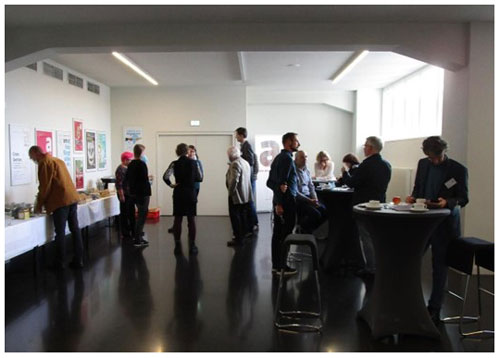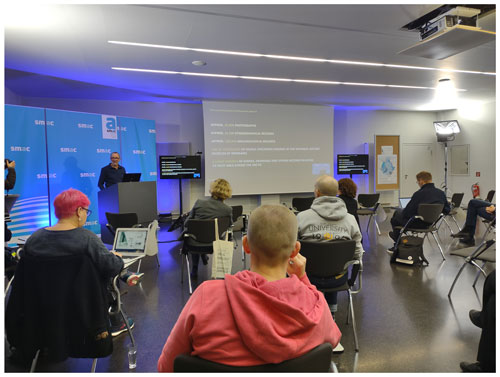Conferences on the Arctic are no rarity. Climate change, social development,
adaptation, sustainability, food security, geopolitics – all are well-known
topics from such conferences. What made the “On melting ground. Arctic Archaeology” conference stand out is the focus on the archaeological
material and its role in helping prepare for the exhibition. This was
visible in the broadness of the subjects covered in presentations and how
the question of ways to improve played a minor role compared to how best to
represent the Arctic. Compared to conferences with a more specialised focus,
many presentations consisted of dense but cursory expositions. For a student
who is relatively new to Arctic archaeology, like this author, this was a fun
insight into Arctic archaeology's diversity. What is interesting to note
about these cursory expositions is that although they fitted within the
session topics and did provide the conference organisers with useful
information, they did not try to convert their material into an output more
easily adaptable for an exhibition. However, two presenters stood out in
their focus on creating an accessible narrative and are worth mentioning here.
Liliana Janik addressed the topic of environments through the visual
narratives of rock art. Based on examples from Alta, Norway, and
the White Sea, Russia, this talk provided insights into the world around the
artists and how they considered their changing surroundings.
Frigga Kruse similarly presented the narrative of life and rapid changes at
Advent City, a coal-mining settlement in Svalbard, based on what could be
told from particular findings from the site. This example was used to show
how archaeological findings can be re-told using words often associated with
climate studies like “transformation”, “resilience”, and “adaptation” which
might help shed light on how archaeology can contribute to the climate
debate.
Thirty-three talks were presented in 3 days. Here is a sample of the
talks.
Otto Habeck and Sari Stark both examined the complex interactions between
humans, their herds, and the environment to understand long-term ecosystem
changes to better project influences of climate change. Sari Stark presented
the slow recovery of the tundra landscape after being grazed by reindeer
herds primarily due to soil composition changes. Otto Habeck looked into the
dynamics between pastoralism and permafrost. Referring to the conference
title, this talk pointed out that many processes influence ecosystem and
socio-economic changes and melting ground is just one of them.
Five presentations introduced the extraordinarily rich and well-preserved
material found in Russian excavations, such as Ust'-Polui, Ngarka-Yedetayakha
1 and 2, the Ekven cemetery, Naukan, and the Paipelghak settlement, and in the
museum collections concerning these.
The last presenter to be mentioned here is Kirstine Møller, who delivered
a talk on the lesser-known aspects of competing Moravian and Danish
ideologies during the colonial period in Greenland and how they influenced
traditional Inuit life.






